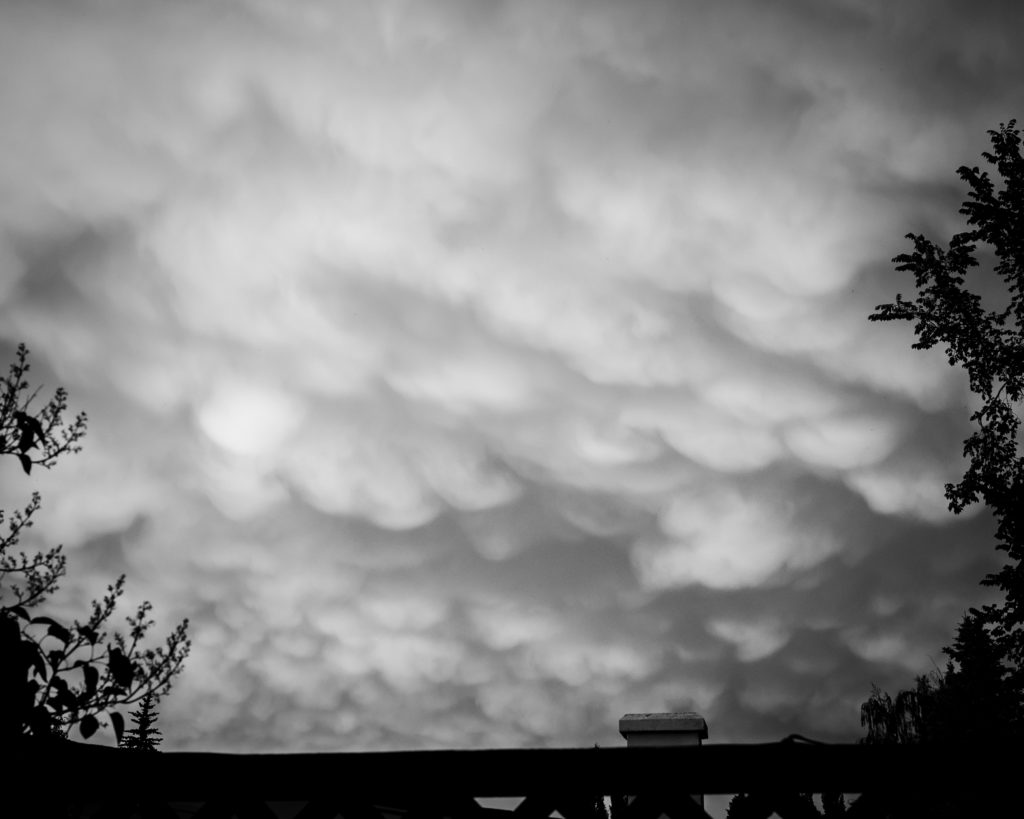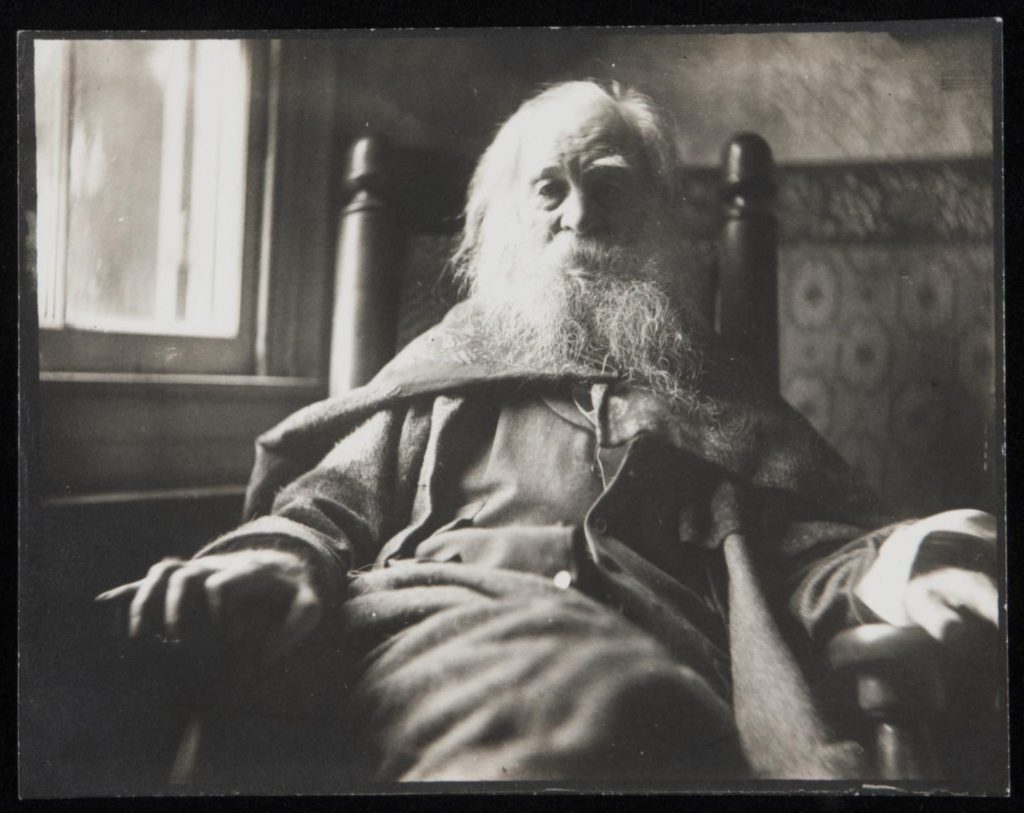
The summer ‘monsoons’ have obliterated the stars for the past couple of weeks and at least for one week more. But a good stargazer still needs to look up from time to time, which is how I found a formation of mammatus clouds passing overhead after an afternoon and evening of heavy thunderstorms near Calgary, Canada.
These ominous and distinctively shaped clouds are usually formed on the underside of anvil-shaped cumulonimbus clouds that cause severe thunderstorms. These sagging pouches are mostly made of ice crystals. An individual “pouch” can range anywhere from one to three kilometers in diameter, and a mammatus cloud field can stretch for dozens of kilometers across the sky.
Their formation is still poorly understood, but they may form from cold, dense air sinks toward the earth from higher up. This sinking air pokes through the bottom of the anvil resulting in the pouch-like appearance. So they may be a rare occurrence of cloud formation caused by sinking air rather than rising air. The cloud droplets and ice crystals eventually evaporate and the mammatus clouds dissipate. These clouds were passing quickly and moved over the horizon before they faded away.
Share This:
